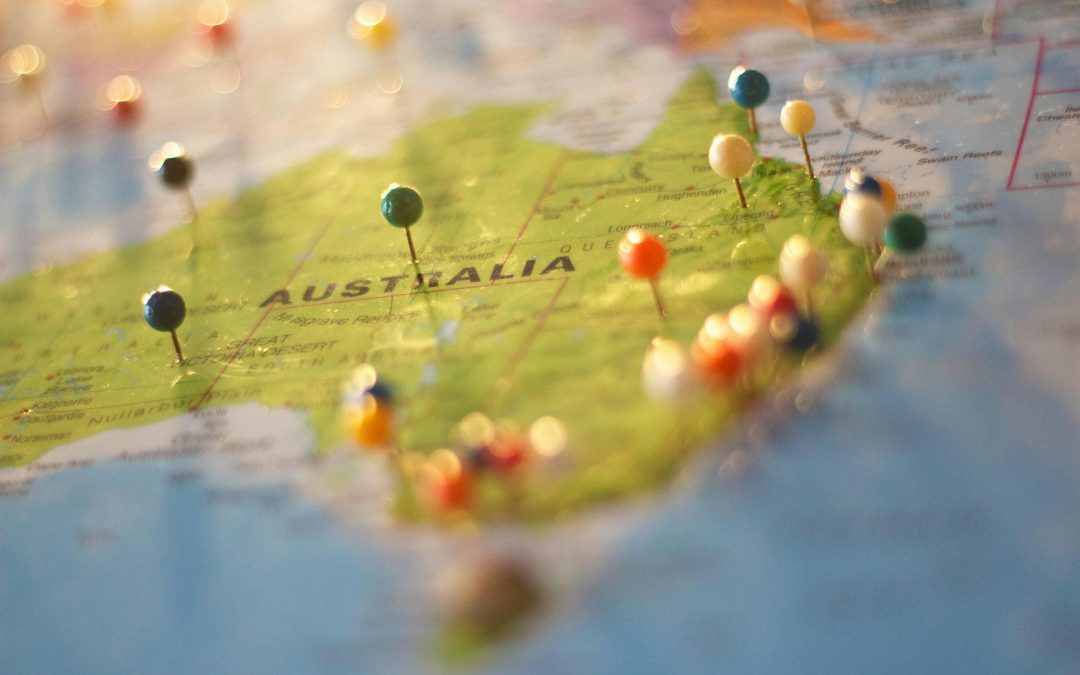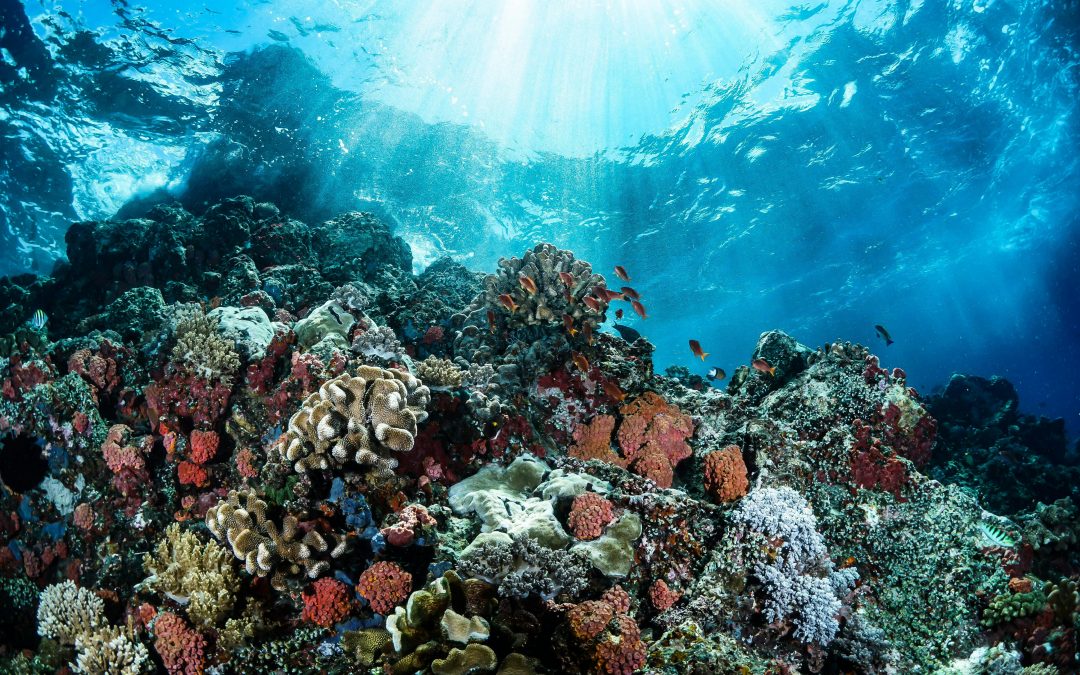L'Océanie n'est pas seulement une région, c'est une révélation. Comprenant l'Australie, la Nouvelle-Zélande et les îles du Pacifique, elle s'étend sur le plus grand océan du monde, offrant aux voyageurs une tapisserie de paysages sauvages, de cultures anciennes et d'une simplicité pleine d'âme.

L'Océanie dévoilée

L'Océanie dévoilée : Rivages sauvages, culture profonde et esprit du Pacifique
Introduction : Le bout du monde, le cœur de la terre
L'Océanie n'est pas seulement une région, c'est une révélation. Comprenant l'Australie, la Nouvelle-Zélande et les îles du Pacifique, elle s'étend sur le plus grand océan du monde, offrant aux voyageurs une tapisserie de paysages sauvages, de cultures anciennes et d'une simplicité pleine d'âme.
Des plages de Byron Bay balayées par le surf aux fjords de Nouvelle-Zélande en passant par les jardins de corail de Fidji, l'Océanie vous invite à explorer non seulement des lieux, mais aussi des philosophies. C'est là que la nature parle fort, que les communautés vivent lentement et que le voyage se transforme.
Dans ce blog, nous voyagerons à travers les destinations les plus fascinantes de l'Océanie, en découvrant les histoires, les rituels et les rythmes qui font de cette région l'une des plus enrichissantes de la planète.
1. L'Australie : Terre de contrastes et de connexions
Byron Bay : Surf, esprit et durabilité
Byron Bay, sur la côte est de l'Australie, est souvent décrite comme une ville de surf spirituelle. Avec ses plages dorées, son arrière-pays luxuriant et son ambiance bohème, c'est un lieu où le bien-être et la nature sauvage se rencontrent.
Pourquoi visiter Byron Bay ?
- Surf à The Pass ou à Wategos Beach
- Randonnée jusqu'au phare du cap Byron pour le lever du soleil
- Explorer le château de cristal et les jardins de Shambhala
- Participer aux marchés de producteurs locaux et aux festivals du bien-être
L'éthique de Byron Bay est ancrée dans la durabilité, la communauté et la créativité. C'est un endroit où l'on peut ralentir, respirer profondément et se reconnecter.
Tasmanie : nature sauvage et merveilles
La Tasmanie, État insulaire d'Australie, est un havre pour les amoureux de la nature et les amateurs de solitude.
Faits marquants :
- Parc national de Cradle Mountain-Lake St Clair
- MONA (Museum of Old and New Art) à Hobart
- La gastronomie et la faune de l'île Bruny
- Les plages de granit orange de la baie des incendies
La Tasmanie offre une expérience brute et élémentaire, parfaite pour la randonnée, le kayak et l'introspection.
Le Centre Rouge : Paysages sacrés
Uluru (Ayers Rock) est plus qu'un monument : c'est un site culturel vivant pour le peuple Anangu.
Expériences :
- Marcher à la base d'Uluru avec un guide autochtone
- Visite des dômes de Kata Tjuta
- Observation des étoiles dans le désert
- En savoir plus sur le Tjukurpa (loi et récit Anangu)
Le Centre rouge enseigne aux voyageurs le respect, la résilience et le caractère sacré de la terre.
2. La Nouvelle-Zélande : L'âme double d'Aotearoa
La Nouvelle-Zélande, ou Aotearoa, est une terre de dualité : montagnes et plages, Maori et Pākehā (européens), aventure et sérénité.
Île du Sud : Drame et profondeur
Destinations incontournables :
- Parc national du Fiordland : Milford et Doubtful Sound
- Queenstown : Capitale de l'aventure avec bungee, ski et jet boat
- Wanaka : Calme au bord du lac et sentiers de randonnée
- Kaikōura : Observation des baleines et fruits de mer
L'île du Sud est un lieu cinématographique, spirituel et infiniment photogénique.
Île du Nord : Culture et communauté
Faits marquants :
- Rotorua : Merveilles géothermiques et culture maorie
- Wellington : Une capitale artistique avec de bons cafés et des musées
- La baie des Îles : Voile, plongée en apnée et histoire
- Grottes de Waitomo : Vers luisants et rivières souterraines
L'île du Nord offre de la chaleur, des récits et des liens.
La culture maorie : Un héritage vivant
Voyager en Nouvelle-Zélande, c'est s'engager dans Te Ao Māori-la vision du monde des Māori.
Expériences culturelles :
- Assister à une pōwhiri (cérémonie de bienvenue)
- Apprendre le haka et le waiata (chansons)
- Visite d'un marae (lieu de rencontre)
- Entendre les légendes de Tāne Mahuta et Māui
Le respect, la réciprocité et le kaitiakitanga (gardien de la nature) sont au cœur des valeurs Māori et des voyages utiles.
3. Les îles du Pacifique : Mondes bleus et traditions profondes
Les nations insulaires d'Océanie - Fidji, Samoa, Tonga, Vanuatu et d'autres - offrent aux voyageurs la possibilité de découvrir une vie façonnée par l'océan.
Fidji : Corail, culture et communauté
Les Fidji sont réputées pour leurs eaux turquoise et leur chaleureuse hospitalité. Mais au-delà des stations balnéaires se cache une riche tapisserie culturelle.
Ce qu'il faut faire :
- Plongée en apnée dans les îles Yasawa
- Visite d'un village traditionnel fidjien
- Participer à une cérémonie du kava
- Randonnée dans le parc national du patrimoine de Bouma
Le concept de “bula spirit”-La joie, l'accueil et la connexion sont palpables.
Samoa : Fa'a Samoa et les sites sacrés
La culture samoane, connue sous le nom de Fa'a Samoa, Il met l'accent sur la famille, le respect et la tradition.
Faits marquants :
- Nager dans la fosse océanique de To Sua
- Explorer les champs de lave et les chutes d'eau
- Assister à une soirée fiafia (danse et fête)
- Visite de la maison de Robert Louis Stevenson
Les Samoa offrent aux voyageurs la possibilité de découvrir un patrimoine vivant et des beautés naturelles.
Tonga : le royaume du Pacifique
Les Tonga sont l'une des dernières monarchies du Pacifique, avec un fort sentiment d'identité et de fierté.
Expériences :
- Observer les baleines à bosse à Vava'u
- Visite du trilithon Ha'amonga ‘a Maui
- Explorer des îles inhabitées en kayak
- Apprendre à connaître le tissu tapa et les contes de Tonga
Les îles Tonga sont calmes, authentiques et profondément ancrées dans la tradition.
4. Zones climatiques de l'Océanie : Faire ses valises et planifier
L'Océanie couvre plusieurs zones climatiques :
- Tropicale (Fidji, Samoa): Chaud et humide toute l'année
- Tempéré (Nouvelle-Zélande): Quatre saisons, temps variable
- Aride (Australie centrale): Journées chaudes, nuits froides
- Alpine (Île du Sud de la Nouvelle-Zélande): Neige en hiver, étés frais
Conseils d'emballage :
- Couches légères pour les zones tropicales
- Matériel imperméable pour la Nouvelle-Zélande
- Crème solaire et hydratation pour les déserts
- Vêtements respectueux pour les visites culturelles
Vérifiez toujours les coutumes locales et les conditions météorologiques avant de partir.
5. Durabilité en Océanie : des voyages qui rendent service
Les écosystèmes océaniens sont fragiles et sacrés. Les voyageurs peuvent contribuer à leur protection en :
A. Soutenir les entreprises locales
- Séjourner dans des gîtes familiaux
- Acheter de l'artisanat auprès d'artisans autochtones
- Manger des produits locaux
B. Respecter la nature
- Suivre les principes du "Leave No Trace" (ne pas laisser de traces)
- Éviter de toucher le corail ou la faune
- Utiliser une crème solaire sans danger pour les récifs
C. Apprendre et écouter
- Participer à des ateliers culturels
- Poser des questions avec humilité
- Partager des histoires de manière responsable
Le voyage durable en Océanie est une question de réciprocité : il ne s'agit pas seulement de prendre, mais aussi de donner.
6. Bien-être et reboisement en Océanie
L'Océanie est une destination de bien-être naturel. Voici comment vous ressourcer corps et âme :
Australie : Byron Bay et la Tasmanie
- Yoga sur la plage
- Baignade en forêt dans des bosquets d'eucalyptus
- Surf thérapie et travail sur la respiration
Nouvelle-Zélande : Wanaka et Rotorua
- Sources d'eau chaude et bains de boue
- Retraites de randonnée et de méditation
- Traditions de guérison maories
Îles du Pacifique : Fidji et Samoa
- Baignade dans l'océan et plongée avec masque et tuba dans les coraux
- Massage traditionnel et remèdes à base de plantes
- Rituels à l'huile de coco et cérémonies du kava
Ici, le bien-être n'est pas fabriqué, il est hérité, intuitif et immersif.
7. Les voix de l'Océanie : les voyageurs réfléchissent
Lily, 33 ans, Vancouver
“En Nouvelle-Zélande, j'ai eu l'impression que la terre me parlait. Les guides Māori ne se sont pas contentés de nous montrer des endroits, ils nous ont raconté des histoires qui ont changé ma façon de voir le monde.”
Tane, 45 ans, Rotorua
“Nos ancêtres nous ont appris à prendre soin de la terre. Lorsque les voyageurs viennent avec respect, ils font partie de cette histoire.”
Maya, 29 ans, Londres
“Nager aux Fidji, c'était comme revenir à quelque chose d'ancien. Le corail, les couleurs, le silence - c'était une guérison”.”
8. Comment planifier votre voyage en Océanie
Étape 1 : Choisir son domaine d'action
- Aventure (Nouvelle-Zélande, Australie)
- Culture (Samoa, Tonga)
- Bien-être (Byron Bay, Fidji)
- Nature (Tasmanie, Vanuatu)
Étape 2 : Élaborer un itinéraire lent
- Passer au moins 2 à 3 nuits par site
- Inclure des expériences culturelles et du temps passé dans la nature
- Laisser de la place à la spontanéité
Étape 3 : Voyager en toute connaissance de cause
- Compensez votre empreinte carbone
- Apprendre des expressions locales de base
- Respecter les sites sacrés et les coutumes
Oceania récompense les voyageurs qui se déplacent avec intention.
Conclusion : L'Océanie, une manière d'être
L'Océanie n'est pas seulement un lieu, c'est une façon d'être. Elle nous apprend à écouter la terre, à honorer l'océan et à vivre avec le cœur. Elle nous invite à ralentir, à nous connecter et à nous rappeler que le voyage n'est pas une question de consommation, mais de communion.
Alors, que vous surfiez à Byron Bay, que vous fassiez de la randonnée dans le Fiordland ou que vous partagiez du kava aux Fidji, laissez l'Océanie vous changer. Laissez-la vous rappeler que c'est souvent aux confins du monde que résident les vérités les plus profondes

Written by
Plus de cette catégorie

L'Océanie dévoilée

L'Océanie dévoilée
L'Océanie n'est pas seulement une région, c'est une révélation. Comprenant l'Australie, la Nouvelle-Zélande et les îles du Pacifique, elle s'étend sur le plus grand océan du monde, offrant aux voyageurs une tapisserie de paysages sauvages, de cultures anciennes et d'une simplicité pleine d'âme.

L'Océanie dévoilée
L'Océanie n'est pas seulement une région, c'est une révélation. Comprenant l'Australie, la Nouvelle-Zélande et les îles du Pacifique, elle s'étend sur le plus grand océan du monde, offrant aux voyageurs une tapisserie de paysages sauvages, de cultures anciennes et d'une simplicité pleine d'âme.
Commentaires
Notre lettre d'information

